My user will submit a FromDate and a ToDate. What I want to happen is to select the dates that fall in between these dates, which I have accomplished with the script below. The dates will by dynamic.
DECLARE @fromDateParam DATETIME = '2022-01-24 00:00:00.000'
DECLARE @toDateParam DATETIME = '2022-01-29 00:00:00.000'
;WITH fnDateNow(DayOfDate) AS
(
SELECT @fromDateParam AS TransactionDate
UNION ALL
SELECT DayOfDate + 1
FROM fnDateNow
WHERE DayOfDate < @toDateParam
)
SELECT fnDateNow.DayOfDate AS TransactionDate
FROM fnDateNow
This returns that dates as rows. What I am looking for is a way to make these dates return as the columns for a different script.
This table is called DailyTransactionHeader and it has a column [TransactionDate] and another one called [Amount].
There is the probability that their is not a DailyTransactionHeader with the specified Date for this I am looking to return 0.
So I am trying to have the data look like this (I formatted the date) There would be more than one row, but I just wanted to show an example of what I am trying to accomplish.
I appreciate any help,
Thanks
